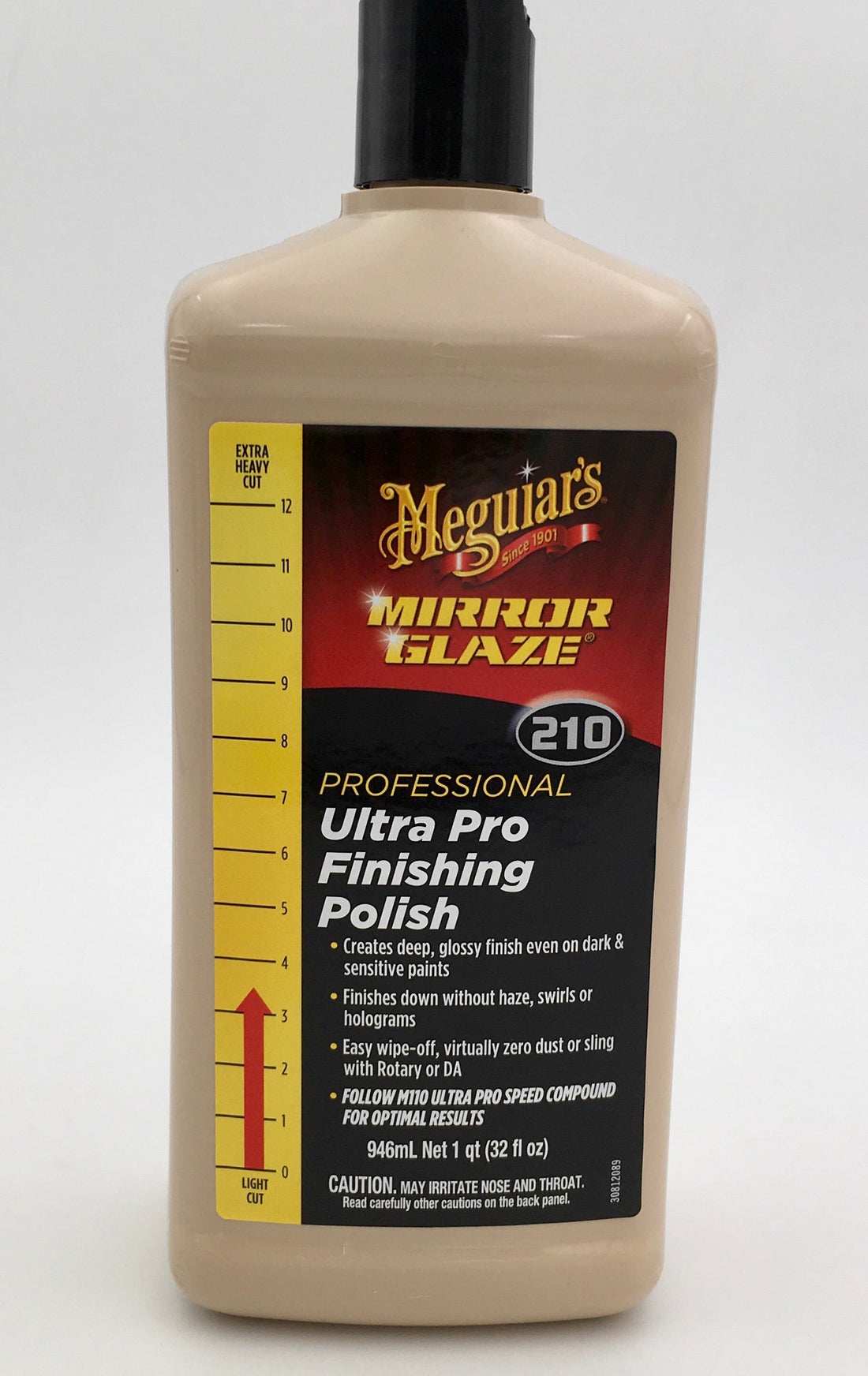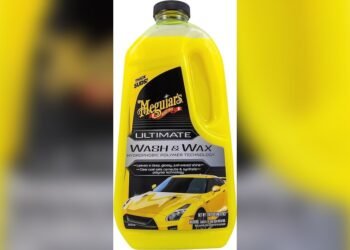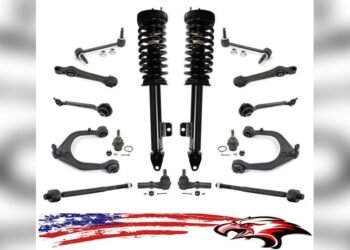When it comes to perfecting your car’s paint, choosing the right polish can make all the difference. You’ve probably heard about Meguiar’s 205 and 210 polishes, but which one is truly the best for your needs?
Whether you’re dealing with minor imperfections or aiming for that flawless, mirror-like shine, understanding the key differences between Meguiar’s 205 and 210 will help you get the results you want without wasting time or effort. Stick with me as we break down their strengths, weaknesses, and ideal uses—so you can confidently pick the polish that suits your car and skill level perfectly.
Ready to unlock your car’s true shine? Let’s dive in.
Product Features
Meguiar’s 205 and 210 are popular polishes for car paint correction. Understanding their product features helps in choosing the right one. Both have unique qualities that suit different paint conditions and detailing needs.
Grit And Abrasiveness
Meguiar’s 205 is a fine polish with moderate abrasiveness. It removes light to moderate paint defects like swirl marks and scratches. Meguiar’s 210 is less abrasive and designed for ultra-fine polishing. It smooths out minor imperfections and enhances gloss without heavy cutting. The 205 cuts more, while the 210 focuses on finishing.
Compatibility With Paint Types
Meguiar’s 205 works well on most factory and cured paints. It is effective on harder paint surfaces that need defect removal. Meguiar’s 210 suits soft and sensitive paint types. It reduces the risk of haze or burning on delicate finishes. Both products are safe for clear coats but differ in paint sensitivity.
Formula And Ingredients
The formula of Meguiar’s 205 contains fine abrasives and lubricants for smooth cutting action. It balances cutting power with ease of use. Meguiar’s 210 has a refined formula with ultra-fine abrasives and advanced polymers. This blend enhances shine and provides a slick finish. Both use quality ingredients to protect paint while polishing.

Credit: www.reddit.com
Cutting Power
Cutting power is a key factor when choosing between Meguiar’s 205 and 210 polishes. It determines how well each product removes paint defects and preps the surface for a smooth finish. Both offer distinct strengths that detailers consider for various paint conditions. Understanding their cutting abilities helps achieve the desired shine while protecting the paint.
Removing Swirls And Scratches
Meguiar’s 205 has moderate cutting power. It effectively removes light swirls and minor scratches. It is ideal for surfaces with small imperfections. Meguiar’s 210 offers slightly less cut but provides a finer finish. It works better on moderate swirls while leaving a glossy surface. Both can reduce defects but vary in aggressiveness.
Performance On Soft Vs Hard Paint
Soft paint demands gentler cutting action to avoid damage. Meguiar’s 210 suits soft paint well. It polishes without risking haze or burn. Meguiar’s 205 is better on hard paint where more cut is needed. It quickly removes deeper scratches but requires careful technique. Knowing paint hardness guides product choice for best results.
User Control And Technique
Meguiar’s 205 needs more user control. Its stronger cut can cause haze if used incorrectly. Skilled technique is important to balance cut and finish. Meguiar’s 210 is more forgiving and easier for beginners. It allows more margin for error while still improving paint clarity. Both require proper polishing tools and pressure for optimal results.
Finish Quality
Finish quality is key when choosing between Meguiar’s 205 and 210. Both products aim to enhance your vehicle’s look, but they differ in how the final surface appears. Understanding these differences helps you pick the right polish for your needs.
Gloss And Shine Level
Meguiar’s 210 delivers a higher gloss and deeper shine. It refines the surface to create a mirror-like finish. The 205 also offers good gloss but focuses more on correcting paint flaws first. This makes 210 ideal for finishing after 205’s cutting stage.
Haze And Residue
The 210 polish leaves very little haze or residue behind. It wipes off cleanly, saving time during detailing. The 205 can sometimes leave slight haze, especially on soft or delicate paint. Careful technique reduces this issue but requires more skill.
Final Surface Texture
After using 210, the paint feels smooth and silky to the touch. It enhances clarity and depth in the paintwork. The 205 may leave a slightly rougher texture if not fully polished out. Many detailers use 205 to correct defects, then finish with 210 for perfect smoothness.
Ease Of Use
The ease of use is a key factor when choosing between Meguiar’s 205 and 210. Both products offer unique features that affect how simple they are to work with. Understanding these differences helps you pick the right polish for your needs.
Working Time And Buffing
Meguiar’s 205 provides a longer working time, allowing more time to work the polish. It stays wet on the pad, making it easier to spread evenly. Buffing off 205 is smooth and leaves less haze.
Meguiar’s 210 dries faster, requiring quicker buffing. It can be more challenging for beginners to remove without streaks. Buffing 210 often reveals a higher gloss but needs careful attention.
Application Methods
Both 205 and 210 can be applied by hand or machine. Applying by hand takes more effort and time but works well for small areas. Machine application is faster and delivers consistent results.
205 is more forgiving for hand application due to its slower drying time. 210 demands faster movements to avoid drying too soon. Using the right pad helps improve application ease for both.
Polisher Compatibility
Meguiar’s 205 is compatible with most dual-action and rotary polishers. It works well on soft and hard paint types without overheating. This makes it versatile for many detailing setups.
Meguiar’s 210 also suits dual-action and rotary polishers but prefers softer pads to prevent swirl marks. It performs best with moderate speed settings to control heat buildup.
Durability And Longevity
Durability and longevity matter most when choosing between Meguiar’s 205 and 210. Both products offer excellent polishing results, but their lasting effects differ. Understanding how long the finish stays protected helps you pick the right polish for your car. This section explores their wax and sealant compatibility, long-term protection, and resistance to environmental factors.
Wax And Sealant Compatibility
Meguiar’s 205 and 210 both work well with waxes and sealants. The 210 polish leaves a smoother surface, making wax and sealant bonding stronger. This helps coatings last longer and look better. The 205 polish may need extra cleaning before applying wax or sealant to ensure proper adhesion. Using compatible products boosts durability.
Long-term Protection
The 210 polish offers a finer finish that protects paint longer. It reduces the need for frequent polishing and waxing. The 205 is more aggressive and may remove some protective layers, requiring faster reapplication of wax or sealant. For lasting protection, the 210 is often preferred by detailers focused on preserving paint health.
Resistance To Environmental Factors
Environmental damage like UV rays, dirt, and water spots can harm your car’s finish. Polishing with 210 helps create a tougher surface that resists these elements better. The 205 polish cleans deeper but leaves paint more exposed until sealed. Choosing the right polish affects how well your car stands up to weather and road conditions.

Credit: www.detailedimage.com
Price And Value
Choosing between Meguiar’s 205 and 210 often depends on their price and value. Understanding costs, sizes, and benefits helps make a smart purchase. Both products serve different needs, so knowing what you get for your money matters.
Cost Comparison
Meguiar’s 205 usually costs less than 210. The price difference reflects their polish strength and finish quality. 210 is priced higher due to its finer formula and ease of use. Budget buyers may prefer 205 for basic polishing tasks.
Size And Quantity Options
Both 205 and 210 come in similar sizes, mostly around 8 ounces. Some sellers offer larger bottles or combo packs to save money. These options help you decide based on how often you polish your car. Bigger sizes mean better value per ounce.
Value For Money
Meguiar’s 210 offers better value if you want a smooth, high-gloss finish with less effort. Its forgiving formula reduces the risk of paint damage. 205 gives strong cutting power but needs more skill. For frequent users, 210’s quality justifies the higher cost.
User Feedback
User feedback on Meguiar’s 205 and 210 polishes highlights different experiences and preferences. Both products have strong followings among professionals and enthusiasts. This section shares honest opinions from various users. It also covers common praise and issues reported with these polishes.
Professional Detailer Opinions
Many professional detailers appreciate Meguiar’s 205 for its stronger cutting ability. They use it to remove moderate paint defects and oxidation. It works well on harder paint surfaces. Detailers note it requires some skill to avoid haze.
Meguiar’s 210 is favored for finishing work. It produces a high-gloss shine with less effort. Pros like its forgiving nature on soft or delicate paint. They often use 210 after 205 to refine the finish.
Enthusiast Reviews
Car enthusiasts often praise 205 for restoring older or damaged paint. They find it effective for DIY projects. Some mention it can be challenging for beginners to master. Enthusiasts enjoy the smooth finish left by 210 polish.
Users say 210 is easy to apply and buff off. They recommend it for those wanting a quick, shiny result. Many use it alone on lightly flawed paint. Overall, enthusiasts see both as valuable tools.
Common Issues And Praise
Some users report 205 can leave a slight haze if not wiped properly. It demands careful polishing technique and machine speed control. Others praise its cutting power and ability to remove defects effectively.
210 is often praised for its ability to enhance gloss and clarity. Few mention it may not cut enough on heavily damaged paint. Both polishes receive strong marks for ease of use and final shine.
Best Use Cases
Meguiar’s M205 and M210 are both excellent products for car polishing. Each has unique strengths suited for different tasks. Choosing the right one depends on the paint condition and desired finish. Understanding their best use cases helps achieve top results with less effort.
When To Choose M205
M205 is a great choice for heavy oxidation and deeper scratches. It works well on older or rough paint surfaces. Use M205 when you need strong cutting power to remove defects. It is ideal before applying a finer polish. M205 leaves a smooth surface ready for finishing. This product suits experienced users comfortable with more aggressive polishing.
When To Choose M210
M210 is designed for softer paints and delicate finishes. It offers moderate cutting with a focus on gloss and clarity. Use M210 on newer cars or well-maintained paint. It is perfect for removing light swirl marks and minor imperfections. M210 is easier to control and less likely to cause haze. Beginners and those aiming for a high shine prefer this polish.
Combining Both For Detailing
Combining M205 and M210 can deliver excellent results. Start with M205 to cut heavy defects and smooth the surface. Follow up with M210 to enhance gloss and refine the finish. This two-step process balances correction and shine. It works well on paint needing both heavy correction and a glossy finish. Use proper pads and techniques for best results.

Credit: detaillink.com
Frequently Asked Questions
What Is The Difference Between M205 And M210?
M205 offers a finer cut and higher gloss for softer paints, while M210 provides more aggressive cutting for moderate paint defects. M205 is easier to use and ideal for finishing, whereas M210 targets heavier imperfections with stronger correction.
What Grit Is Meguiars M205?
Meguiar’s M205 has a grit equivalent to about 2000 grit. It is an ultra-fine finishing polish.
Which Meguiar’s Wax Lasts The Longest?
Meguiar’s Ultimate Wax lasts the longest. It is a synthetic sealant offering durable protection and a glossy finish.
What Pad For Meguiars 210?
Use a soft foam polishing pad with Meguiar’s 210 for optimal finishing and gloss on paint surfaces.
What Is The Main Difference Between Meguiar’s 205 And 210?
Meguiar’s 205 cuts more aggressively, while 210 offers a finer, high-gloss finish.
Conclusion
Choosing between Meguiar’s 205 and 210 depends on your paint’s condition. Use 205 for more cut on moderate defects. Pick 210 for softer paint and a higher gloss finish. Both offer great results but suit different needs. Test them on a small area first.
Proper technique ensures the best outcome every time. Your car’s shine will reflect the care you put in. Simple steps lead to impressive results.

















